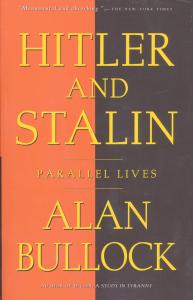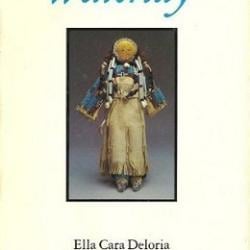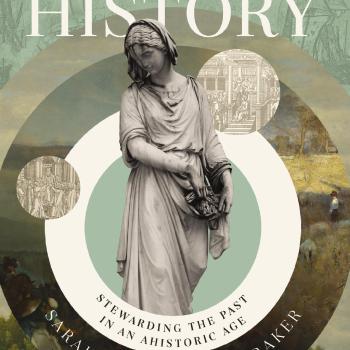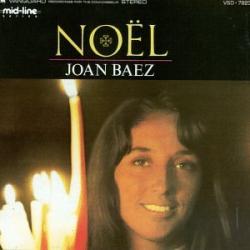“Why should we read — and write — biographies?”
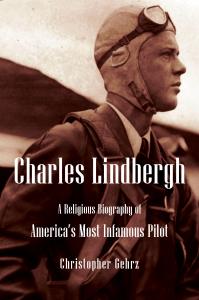 It seemed like a good question to ask halfway through the adult class I taught last month at a Presbyterian church. I’d spent the first session summarizing key events and themes from my spiritual biography of Charles A. Lindbergh, so before we dug any deeper, I wanted to think more closely about the appeal and purposes of that genre of writing.
It seemed like a good question to ask halfway through the adult class I taught last month at a Presbyterian church. I’d spent the first session summarizing key events and themes from my spiritual biography of Charles A. Lindbergh, so before we dug any deeper, I wanted to think more closely about the appeal and purposes of that genre of writing.
Biographies are generally popular with all sorts of readers. (My group mentioned reading about everyone from presidents and generals to composers and explorers.) But since I was talking with fellow followers of a Lord and Savior whose life story is told in four different ways in our scriptures, I particularly wondered how everyone thought Christians ought to approach biography.
The first response is the one I expected — the oldest and most enduringly popular reason for Christian biography: “To learn from the lives of spiritual heroes.”
This kind of biographical writing isn’t unique to Christians. Early in the second century CE, for example, Plutarch wrote about the Parallel Lives of great Greeks and Romans. While he aspired to “[purify] Fable, making her submit to reason and take on the semblance of History,” Plutarch did not aim at dispassionate empirical analysis so much as moral instruction.
But followers of Jesus soon found it helpful to tell the stories of saints. I’m no expert on hagiography, but since our message the previous week had mentioned the Council of Nicea, I noted Eusebius’ fanciful account of the Life of Constantine (in which that Roman emperor appeared before that gathering of bishops “like some heavenly messenger of God”) and how Athanasius not only argued for orthodox christology at Nicea but later made legendary the Life of Antony. Later monastic hagiographies helped foster the “cult of the saints” that bothered Protestants, but reformers both magisterial and radical wrote their own stories of spiritual heroes who stood faithful in the face of persecution.
Such writing grew unfashionable with the modernization of the historical discipline in the 19th and 20th centuries, but Christian historian Rick Kennedy has noted the recent revival of what he calls the New Hagiography,” in which “the author must try to analyze methodically while believing. Unthinking piety has to be avoided, but reasonable empathy, even responsible apology, is encouraged.” While “the academic credentials of each book are manifest,” wrote Kennedy in a 2015 article, pointing to works by historians like George Marsden, Grant Wacker, and Thomas Kidd, “the hope of Christian instruction in each of these books is palpable. The authors want their readers to imitate the Christian character of their subjects.”
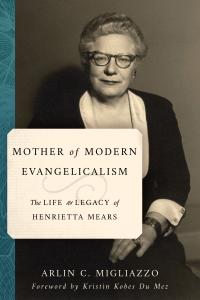 Rick’s own religious biography of Cotton Mather stands in that line, and so too might Arlin Migliazzo’s account of Henrietta Mears, which was recognized last month in the Christianity Today Book Awards. I haven’t read Mother of Modern Evangelicalism yet, but it seems telling that the publisher’s description suggests that Migliazzo’s readers would find in his book “a religious leader worthy of emulation in today’s world….”
Rick’s own religious biography of Cotton Mather stands in that line, and so too might Arlin Migliazzo’s account of Henrietta Mears, which was recognized last month in the Christianity Today Book Awards. I haven’t read Mother of Modern Evangelicalism yet, but it seems telling that the publisher’s description suggests that Migliazzo’s readers would find in his book “a religious leader worthy of emulation in today’s world….”
My own contribution to the same series is about as far from hagiography as you can get. The very first biographies of Charles Lindbergh presented him as a messianic or divine figure, worthy of emulation both as a modern who used technology to expand the definition of human possibility and as a Jazz Age embodiment of values as old-fashioned as modesty and chastity. But writing on the other side of the pilot’s middle-aged advocacy of white supremacy, anti-Semitism, and eugenics, biographers have left it to sculptors to depict a purely heroic Lindbergh.
In fact, it’s become clear to me that Lindbergh’s many faults have made an audience for a new biography smaller than I initially imagined. “Hard pass,” said one commenter when they saw an ad for my book on Facebook, “he was an anti-Semite.” Others are put off by the more recent revelation that Lindbergh secretly fathered seven children with three European mistresses in the 1950s and 1960s. The more conspiracy-minded even insist that Lindbergh masterminded his oldest son’s kidnapping and murder.
One interviewer wondered how I could possibly bear to spend so much time “with that big of a creep.” To which I wanted to ask, “Have you looked at my bookshelf?”
Being a Lindbergh biographer is only a side hustle, after all. I’m a historian of the 20th century, an age of total war, genocide, gulags, and other disasters inflicted by a few humans on the rest of the species. To the extent that there are any biographies on my office shelves, they’re most likely to feature the likes of Adolf Hitler, Josef Stalin, and Mao Zedong, all of whom are at least as creepy as Charles Lindbergh — and far more murderous.
My favorite of the bunch is Alan Bullock’s version of Plutarch: a one-volume telling of the parallel lives of Hitler and Stalin. According to a recent edition of Plutarch’s original, that ancient moralist was interested in exploring both virtue and vice. But there’s nothing remotely hagiographical about Bullock: call it hamartiography, a story of sin.
At least to some extent, that is the nature of my Lindbergh biography. A story of sin isn’t a particularly comfortable tale to tell, but I tried not to pull my punches when truthfulness required such blows. I didn’t linger on the dichotomy between the angelic, even virginal Lindbergh of 1927 and the scheming liar who thirty years later violated his marital vows to bed a woman in Munich (then her sister, and his private secretary). But I did suggest that the story of his bigamy underscored the secretive darkness cloaking most of Lindbergh’s life. And while I take Lindbergh’s daughter Reeve at her word that her father raised her after World War II to be tolerant and unbiased, his own lack of personal prejudice can’t obscure his sympathy for Hitler’s regime or his larger participation in the systemic evil of white supremacy.
Tellingly, no one in my adult Sunday School class suggested that the importance of hamartiography justified reading (and writing) biographies. It’s more pleasant to read of saints. Indeed, I tend to think that the “hard pass” non-readers who can barely tolerate the idea of a sinner’s story being published will inevitably take a U-turn back to hagiography — though their ideas of saintly lives may differ from those of Athanasius and John Foxe.
It’s precisely because I think Martin Luther was right that the sinner and saint share a single life that I’m not excited by either hagiography or hamartiography. I’m willing to use my writing to help readers hold up a mirror to their own virtues and vices — what Tracy McKenzie has called “moral reflection” — but I’m not really a moral philosopher. I’m a historian. And so I resonated most strongly with what one other student said in our opening conversation:
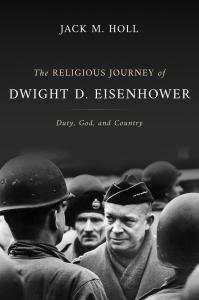
I read biographies because history can be too big.
For example, World War II is so vast and complicated. But I can at least start with a book about Dwight Eisenhower.
Likewise, I wanted to write a biography of Charles Lindbergh and others to read it primarily because it would help us understand histories: of my home state and European immigrants to it, including those who started to see themselves less as “Swedish American” and more as “members of the white race”; of eugenics and its religious advocates; of the debate over American intervention in a second world war; of the development of technology and its impact on humanity and its environment; of celebrity fueled by mass media; etc.
Most of all, I wanted to explore how religion and spirituality — though concerned with things eternal — are subject to change over time. I thought that telling the story of a great-grandchild of a Restorationist preacher rejecting both Christianity and atheism in order to chart his own path to belief in God might help believers like me understand our present and future as Christians inhabiting an increasingly post-Christian society.


